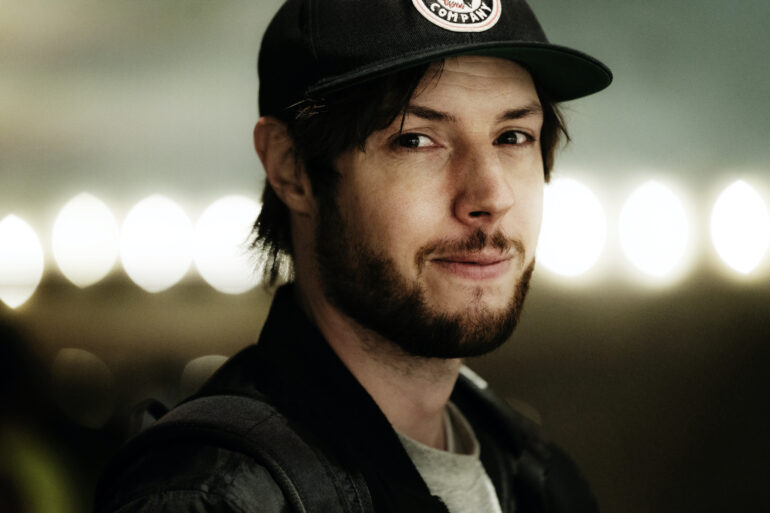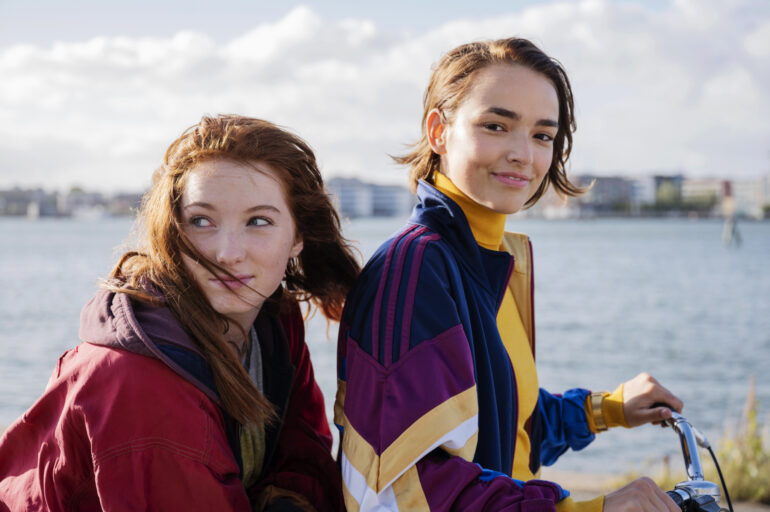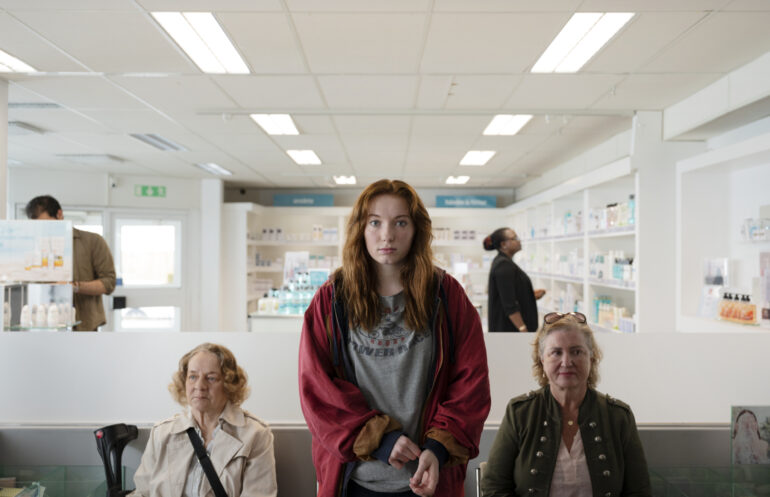WRITTEN BY: Annika Pham
Berlinale: The Swedish coming-of-age film which opened the Göteborg Film Festival is premiering at the online European Film Market, before its national launch February 25.
TrustNordisk is introducing the film to global buyers at this week’s Berlinale European Film Market (February 10-17).
After several short form series for TV, such as SVT’s teen series Sjukt Oklar (Eller & Vera), Christoffer Sandler makes his feature debut with So Damn Easy Going (Så jävla easy going) adapted from Jenny Jägerfeld novel ‘I’m Just So-o Easy Going’.
Sandler co-wrote the script together with Lina Åström, Jessika Jankert, and Linda-Maria Birbeck.
The film centres on Joanna (18), whose life is a mess - she is desperate to get medication to treat her ADHD, but can’t count on her dad who is unemployed and severely depressed after the mother’s recent death. While maintaining a casual sexual affair with Matheus, she starts falling in love with her classmate Audrey and has to face her inner conflicts.
In the starring roles as Joanna and Audrey are newcomers Nikki Hanseblad and Melina Paukkonen. Santi Roney (Quicksand, Tove) plays Joanna’s dad and Emil Algpeus (Lyckoviken) the 19 year-old Matheus.
The film was produced by Annika Hellström, Erika Malmgren for Cinenic (Beyond Dreams, Children of the Enemy), with support among others from Nordisk Film & TV Fond.
So Damn Easy Going just competed for a Dragon Award-Best Nordic Film at the Göteborg Film Festival.
We spoke to Christoffer Sandler.
Firstly, how was the world premiere in Göteborg?
Christoffer Sandler: Pretty good. A lot of people thanked me for the movie, and for succeeding in making a warm and uplifting movie.
You are quite experienced in youth content - having directed the SVT short series Sjukt oklar, Lonsten att få sin mamma att gråta. Was it a natural step for you to dive into Jenny Jägerfeld’s universe?
CS: It was perhaps more of a coincidence. I’ve worked a lot in web-series, short format comedies. My last project before this was aimed at teens. After that Cinenic approached me with this project. I said-sure I can do this!
Had you read the book?
CS: There was already a script when they approached me. I had worked with Lina Åström before, and together we wrote our own version of the script. Then I read the book. We decided to remove some characters, slim down some sidebar stories, but the core is there of course, the love story and Joanna’s ADHD.
I don’t think the neurodevelopmental disorder ADHD that actually touches 3-7% of kids and teens worldwide and 3% of adults, according The Lancet, has been brought to the screens very much…
CS: I haven’t seen it much myself, and that was one aspect that I was interested in. I personally love to play with visuals, and that was a nice way to do this and explore how to visualise Joanna’s state of mind.
What were your inspirations for your visual style?
CS: It comes from a lot of different things. As a child, I was a lot into Star Wars. I’m genre-driven and I love for instance Edgar Wright films, how he tells a story without having to say anything. With this film, we wanted to create a dreamlike feeling, through the images, sound, editing etc and contrasts. With my DoP, Nea Asphäll we discussed how to approach this. For instance, we created a stiffness, sterile feeling, when Joanna interacts with adults-it’s framed in a different way than when Joanna hangs out with Audrey. There is warmth, closeness in these moments. Then there is a contrast between the flickering lights [reflecting Joanna’s inner turmoil] and the calming places-the pool for instance, where Joanna feels safe.
How much research did you do to understand Joanna’s condition?
CS: I read a lot, interviewed people and used the material from the book. Jenny [the author] describes Joanna’s state as a crazy circus in her head, a constant chaos. I interviewed people who said that everyone experiences ADHD differently. One person said: imagine being in a train station and everyone shouts your name…that gave me the idea for the sound and lights in the film. Also, another interesting thing is that when you read about it, you feel…-oh I can tick a lot of boxes myself. Then Melina Paukkonen who plays Audrey has recently been diagnosed with ADHD. She said she could relate to the story.
The tone is light and playful, although Joanna struggles with her condition, she has to care for her father, and she longs for a proper love relation with Audrey…I guess your goal was to lift up the story and make it accessible to a wider audience…
CS: Absolutely. With my DoP, we didn’t want to make a grim, depressing movie. We wanted to make it an uplifting experience and maybe bring some depth that you might not expect. It’s wonderful if you can surprise the audience.
The young newcomer Nikki Hanseblad in the role of Joanna is really impressive. How did you find her?
CS: Basically, one of the producers found her, and somehow, our casting director knew her through some friends. She came to the audition out of curiosity, with a very relaxed attitude. It was refreshing and fun and we could see she had a lot of charisma.
How do you work with youngsters who have no screen experience, especially with Nikki who carries the film on her shoulders?
CS: I didn’t tell her she would carry the film - that would have made her nervous! But really, what’s essential is to create a space where she feels safe. I can be highly sensitive and feel when people are nervous. Then I readjust the scenes, or the dialogues if the actors don’t feel comfortable.
What was the most challenging for you on this first feature film?
CS: It was fun, but nerve-wrecking at the same time. Coming from the short format-15-minute episodes, to 90 minutes dramedy-it wasn’t easy. The hardest was to have the confidence all the time, stay focused on the bigger picture and not get side-tracked by technicalities.
I guess seasoned producers Annika Hellström and Erik Malmgren were very supportive…
CS: Yes, and also, I felt they had faith in me. You don’t want to feel monitored all the time. I also have a background in editing. I knew what I needed to shoot or not. That did save time.
Ultimately, the film is really about finding yourself and accepting who you are…
CS: Absolutely. Joanna feels she is not enough for anyone and people won’t want to hang out with her when they will get to know the real her…She learns how to deal with her insecurities. It’s a relatable issue for anyone, whatever the age.
What’s next?
CS: I’m writing the first draft of a new feature film-a genre piece, with horror elements. The idea is cool…I won’t say too much.


